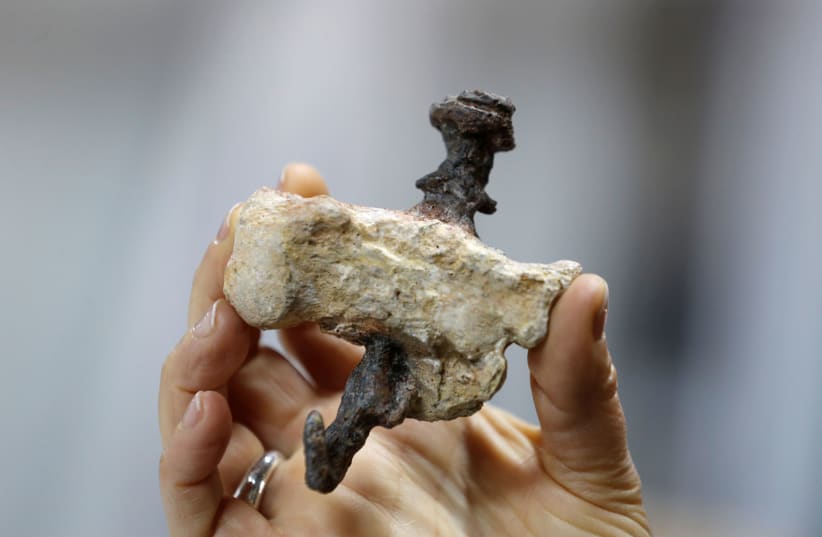The fragments appeared for the first time after a 1990 excavation of a burial site of Caiaphas, the high priest who organized a plot to kill Jesus according to the New Testament.Scholars at the time slammed the suggestion, denying the nails that Israeli filmmaker Simcha Jacobovici had found were the same ones from Caiaphas’s tomb.Last week, Aryeh Shimron, a retired Jerusalem-based geologist who led a new study on these fragments, discovered that the nails were the same ones taken from the Caiaphas site and were also used to crucify someone.“Within the rust and sediment attached to the nails, we also identified and photographed a number of microscopic fragments of bone,” he said.“I believe that the scientific evidence that the nails were used to crucify somebody is indeed powerful,” Shimron said.At one point, the nails mysteriously disappeared, only to resurface when Jacobovici said in his 2011 documentary Nails of the Cross that he found the nails that were used in the crucifixion. The film follows three years of research in which he presents his assertions – some based on empirical data, others requiring much imagination and a leap of faith.Jacobovici said the find was historic. But most experts and scholars contacted by Reuters dismissed his case as far-fetched, with some calling it a publicity stunt.Many ancient relics, including other nails supposedly traced back to the crucifixion, have been presented over the centuries as having a connection to Jesus. Many were deemed phony, while others were embraced as holy.“If you look at the whole story – historical, textual, archaeological – they all seem to point at these two nails being involved in a crucifixion,” Jacobovici said. “And since Caiaphas is only associated with Jesus’s crucifixion, you put two and two together and they seem to imply that these are the nails.”The Israel Antiquities Authority, which oversaw the Jerusalem excavation, said in reaction to the film’s release it had never been proven beyond doubt that the tomb was the burial place of Caiaphas. It also said nails are commonly found in tombs.“There is no doubt that the talented director Simcha Jacobovici created an interesting film with a real archaeological find at its center, but the interpretation presented in it has no basis in archaeological findings or research,” the IAA said.Reuters contributed to this report.
Jerusalem geologist believes we have the nails used for crucifixion
Aryeh Shimron found out that the nails were the same ones taken from the Caiaphas site, and were also used to crucify someone. And they have bone on them.
